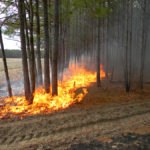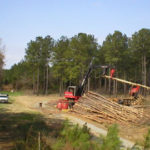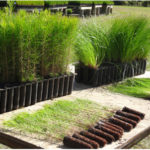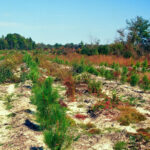Management Practices
Forest management practices are the techniques used to help landowners achieve their goals and to improve the health and productivity of their woodlands. The practices discussed below are those most common to forest management.
 |
PRESCRIBED FIREPrescribed fire, also called controlled burning, is an important low-cost forest management tool that has many benefits including improving wildlife habitat, controlling competing vegetation and reducing or eliminating material on the forest floor that might fuel a wildfire. Learn more about fire and its role in managing a forest. |
 |
HARVESTINGThis section provides information on how harvesting timber can help landowners achieve their goals and keep their woodlands healthy. The N.C. Tree Farm Program recommends that landowners work with a consulting forester when harvesting and selling timber. For information on selecting someone who can help, click here. |
 |
REGENERATIONSustainable forest management requires the establishment of a new forest after the previous forest has been harvested. The regeneration method used will depend on a number of factors including site conditions and desired species. |
 |
HERBICIDESApplication of herbicides can be an effective and low-cost management practice to eliminate or control unwanted vegetation in situations such as site prep for planting seedlings, to reduce competition for an established stand, and to get rid of invasive species. Herbicide use will allow the desired trees a better opportunity to either establish or grow. |
